-
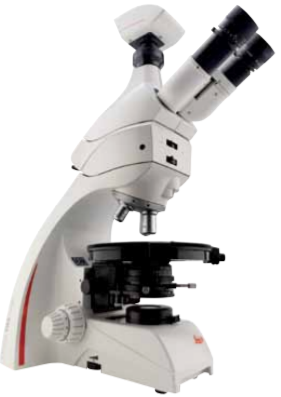 The Leica DM750 P is the ideal polarizing microscope for university and other instructional use, offering a standard and an advanced Bertrand lens module for unsurpassed ease of operation. The Leica DM750 P is the ideal polarizing microscope for university and other instructional use, offering a standard and an advanced Bertrand lens module for unsurpassed ease of operation.
The Leica DM750 P is the ideal polarizing microscope for university and other instructional use, offering a standard and an advanced Bertrand lens module for unsurpassed ease of operation. The Leica DM750 P is the ideal polarizing microscope for university and other instructional use, offering a standard and an advanced Bertrand lens module for unsurpassed ease of operation. -
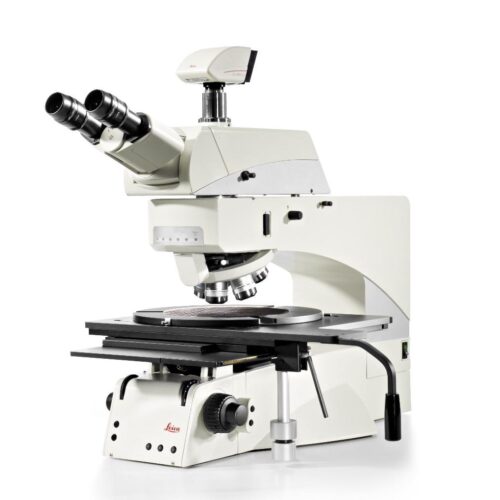 The Leica DM8000 M and Leica DM12000 M optical inspection systems provide an innovative yet cost-effective system solution for mastering present and future inspection challenges with confidence. Inspection, process control and defect analysis of wafers or LCDs and TFTs has to be fast, To detect macro defects, the Leica DM8000 M and DM12000 M have a micro/macro mode for rapid scanning of large components. The macro magnification captures an object field of approximately 40 mm.
The Leica DM8000 M and Leica DM12000 M optical inspection systems provide an innovative yet cost-effective system solution for mastering present and future inspection challenges with confidence. Inspection, process control and defect analysis of wafers or LCDs and TFTs has to be fast, To detect macro defects, the Leica DM8000 M and DM12000 M have a micro/macro mode for rapid scanning of large components. The macro magnification captures an object field of approximately 40 mm. -
 The Leica DMC2900 is a digital USB 3.0 microscope camera with a 3.1 Megapixel CMOS sensor. It is an ideal tool for brightfield microscopic standard applications in research, life science and industry that often require capturing, documenting, and analyzing color images at optimum visibility of microstructures in little time. The Leica DMC2900 is a digital USB 3.0 microscope
The Leica DMC2900 is a digital USB 3.0 microscope camera with a 3.1 Megapixel CMOS sensor. It is an ideal tool for brightfield microscopic standard applications in research, life science and industry that often require capturing, documenting, and analyzing color images at optimum visibility of microstructures in little time. The Leica DMC2900 is a digital USB 3.0 microscope -
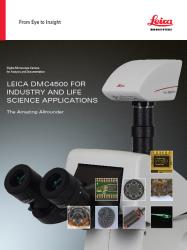 Leica DMC4500 color camera. It has been designed as a versatile, uncomplicated tool that simplifies the imaging process from capture through to processing. It is ideally suited to life science applications such as documenting slides and organisms, pathology or pharmaceutical testing and industrial applications such as quality control and failure analysis.
Leica DMC4500 color camera. It has been designed as a versatile, uncomplicated tool that simplifies the imaging process from capture through to processing. It is ideally suited to life science applications such as documenting slides and organisms, pathology or pharmaceutical testing and industrial applications such as quality control and failure analysis. -
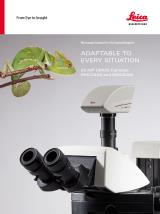 The DMC5400 color CMOS camera offers high frame rate & high-resolution color images even at low magnification. It is optimized to produce fast, high quality images for documentation, evaluation and analysis, for a wide variety of samples and applications in manufacturing and life science research.
The DMC5400 color CMOS camera offers high frame rate & high-resolution color images even at low magnification. It is optimized to produce fast, high quality images for documentation, evaluation and analysis, for a wide variety of samples and applications in manufacturing and life science research. -
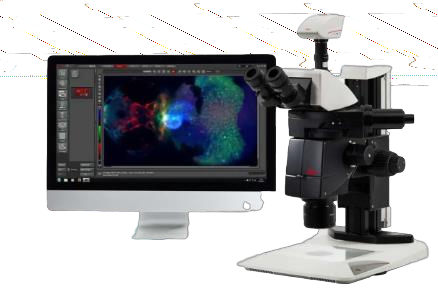 The DMC6200 camera delivers amazing images with intense color detail and contrast - whether at the lowest or highest magnification. Its state-of-the-art CMOS sensor has a 5.86 μm pixel size, 2.3 megapixels sensor resolution, and an astounding dynamic range of 73 dB (4000:1). Achieve an image resolution of up to 20.7 megapixels with cutting-edge pixel shift technology.
The DMC6200 camera delivers amazing images with intense color detail and contrast - whether at the lowest or highest magnification. Its state-of-the-art CMOS sensor has a 5.86 μm pixel size, 2.3 megapixels sensor resolution, and an astounding dynamic range of 73 dB (4000:1). Achieve an image resolution of up to 20.7 megapixels with cutting-edge pixel shift technology. -
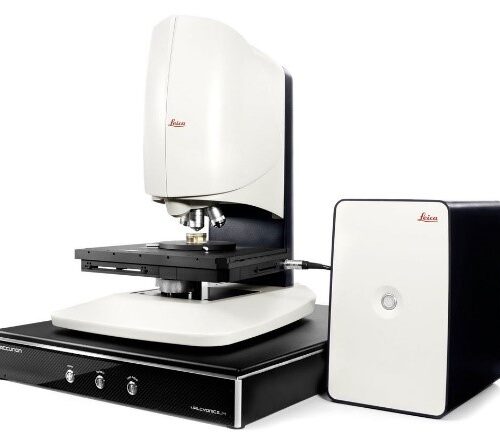 Designed to help you maximize efficiency, Leica DCM8 unites the advantages of High Definition confocal microscopy with interferometry into one versatile, dual-core system. Ultra-fast analysis is ensured thanks to one-click mode selection, sophisticated software and HD confocal scanning without moving parts.
Designed to help you maximize efficiency, Leica DCM8 unites the advantages of High Definition confocal microscopy with interferometry into one versatile, dual-core system. Ultra-fast analysis is ensured thanks to one-click mode selection, sophisticated software and HD confocal scanning without moving parts. -
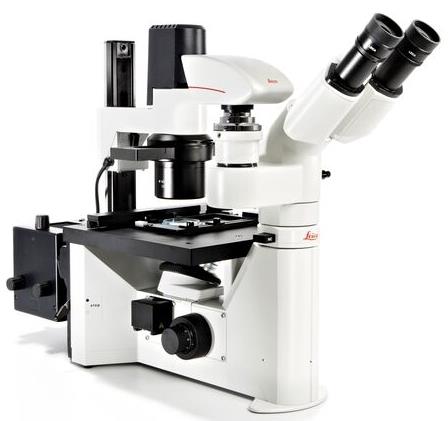 The Leica DM IL LED features a comprehensive set of contrast methods to monitor your specimen the way you need. High-quality Phase contrast, excellent modulation contrast and brilliant fluorescence are just one fingertip away.
The Leica DM IL LED features a comprehensive set of contrast methods to monitor your specimen the way you need. High-quality Phase contrast, excellent modulation contrast and brilliant fluorescence are just one fingertip away. -
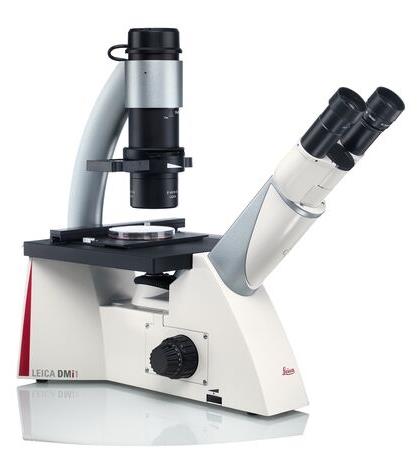 The Leica DMi1 the perfect partner for your live cell laboratory. Use the S40 condenser for optimal resolution with slides, petri dishes, multi-well dishes, and most types of flasks
The Leica DMi1 the perfect partner for your live cell laboratory. Use the S40 condenser for optimal resolution with slides, petri dishes, multi-well dishes, and most types of flasks -
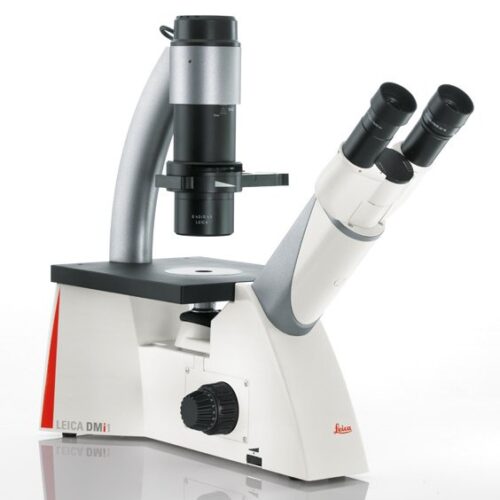 the Leica DMi1 the perfect partner for your live cell laboratory. Use the S40 condenser for optimal resolution with slides, petri dishes, multi-well dishes, and most types of flasks: The S40 provides an extra 10 mm of free space by simply moving it up. The Leica DMi1 camera version is an all-in-one solution for image capturing and cell culture documentation. You can choose between 2.5- or 5.0-megapixels resolution. The camera is mounted at the back of the stand. No additional trinocular tube is needed.
the Leica DMi1 the perfect partner for your live cell laboratory. Use the S40 condenser for optimal resolution with slides, petri dishes, multi-well dishes, and most types of flasks: The S40 provides an extra 10 mm of free space by simply moving it up. The Leica DMi1 camera version is an all-in-one solution for image capturing and cell culture documentation. You can choose between 2.5- or 5.0-megapixels resolution. The camera is mounted at the back of the stand. No additional trinocular tube is needed. -
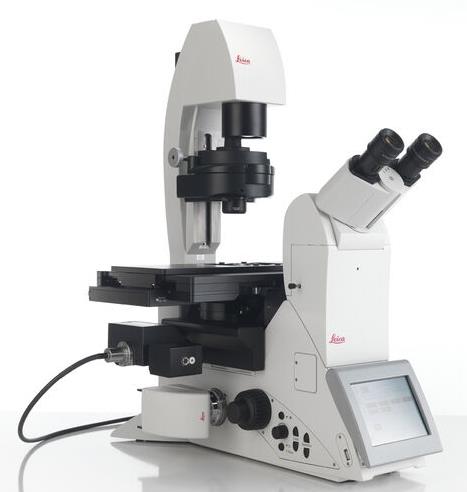 The modular DMi8 inverted microscope is the heart of the DMi8 S platform solution. For routine to live cell research, the DMi8 S platform is a complete solution. Whether you need to precisely follow the development of a single cell in a dish, screen through multiple assays, obtain single molecule resolution, or tease out behaviors of complex processes, a DMi8 S system will enable you to see more, see faster, and find the hidden.
The modular DMi8 inverted microscope is the heart of the DMi8 S platform solution. For routine to live cell research, the DMi8 S platform is a complete solution. Whether you need to precisely follow the development of a single cell in a dish, screen through multiple assays, obtain single molecule resolution, or tease out behaviors of complex processes, a DMi8 S system will enable you to see more, see faster, and find the hidden. -
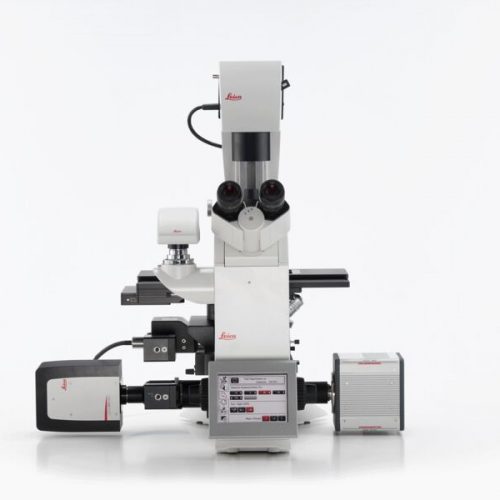 Fluorescence is one of the most commonly used physical phenomena in biological and analytical microscopy, mainly because of its high sensitivity and high specificity. Fluorescence is a form of luminescence.
Fluorescence is one of the most commonly used physical phenomena in biological and analytical microscopy, mainly because of its high sensitivity and high specificity. Fluorescence is a form of luminescence.
